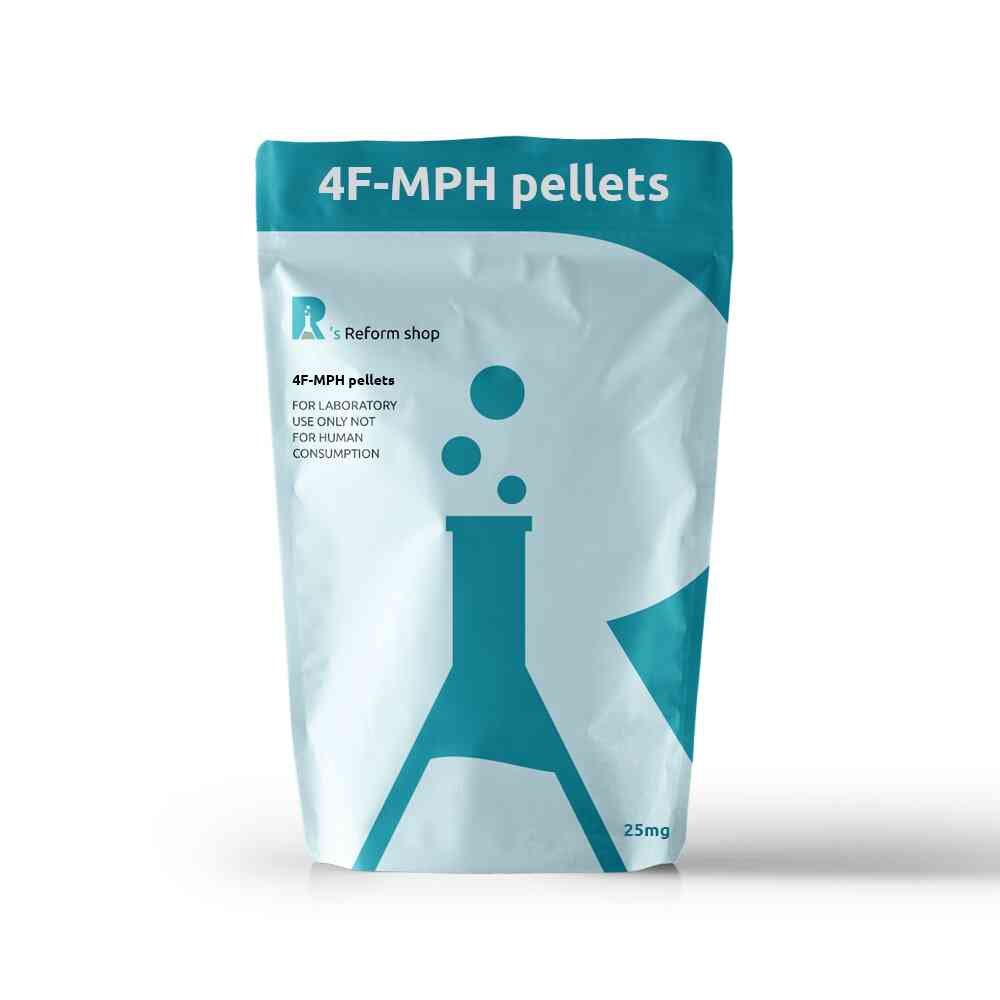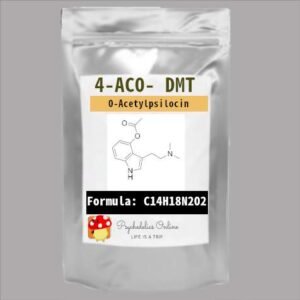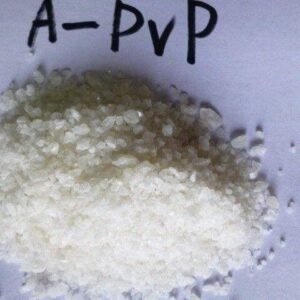Description
Did you know that an increasing number of individuals are seeking cognitive enhancement through the use of psychoactive substances 4F-MPH , such as methylphenidate analogs, to boost their focus and productivity? In the fast-paced world we live in, staying mentally sharp is a top priority for study and presence. That’s where 4fmph comes into play. This powerful nootropic has gained popularity for its ability to enhance concentration and mental performance in the presence of water. Whether you’re a student cramming for exams or a professional looking to maximize your productivity, study and 4fmph offers promising results. So let’s dive in and uncover what makes 4fmph so unique in the spectrum.
Chemical Analysis of 4-Fluoromethylphenidate
Chemical Properties of 4F-MPH
The chemical compound known as 4-Fluoromethylphenidate, or 4F-MPH, is derived from methylphenidate and is commonly used in medications to treat attention deficit hyperactivity disorder (ADHD). The structure of 4F-MPH includes a fluorine atom attached to the phenyl ring. This modification alters the properties, effects, and spectrum of the compound compared to its parent molecule.
Understanding Behavior and Effects
Analyzing the chemical properties and spectrum of 4F-MPH helps researchers understand how it behaves in the body and its potential effects. By studying this information, scientists can gain insights into factors such as potency, duration of action, metabolism, and potential risks associated with its use.
One important aspect that researchers examine is how quickly 4F-MPH is metabolized in the body. Metabolism refers to how a substance breaks down into other compounds through various enzymatic processes. Understanding metabolism can provide valuable information about how long a drug remains active in the system and whether it produces any potentially harmful byproducts.
Analyzing data on methylphenidate analogs like 4F-MPH allows scientists to compare their chemical profiles and predict similarities or differences in their effects. This knowledge aids in determining potential therapeutic uses or identifying substances with higher risks for abuse or adverse reactions.
Pharmacological Evaluation of 4F-MPH
Dopamine and Norepinephrine: Key Players in the Brain
To understand the pharmacological evaluation of 4F-MPH, it is important to explore how this substance affects the brain spectrum. 4F-MPH acts as a potent dopamine reuptake inhibitor, meaning it prevents the reabsorption of dopamine by neurons in the brain. This leads to an increase in dopamine levels, hz which can result in enhanced focus, attention, and motivation.
But that’s not all – 4F-MPH also affects norepinephrine transporters. Norepinephrine is another neurotransmitter involved in various functions such as alertness, stress response, and Hz. By inhibiting its reuptake, 4F-MPH increases norepinephrine levels as well.
Unraveling the Pharmacological Profile
The unique combination of being a dopamine reuptake inhibitor and affecting norepinephrine transporters gives 4F-MPH its distinct pharmacological profile. This profile sets it apart from other psychoactive substances like mph, ph, and hz.
Studying the biological activity of 4F-MPH provides valuable insights into its potential effects and risks. For example, researchers have conducted studies to determine how long this compound remains detectable in femoral blood after ingestion. Understanding these factors helps law enforcement agencies identify illicit usage during drug screenings.
Furthermore, evaluating different vendors who supply substances like 4-Fluoromethylphenidate (abbreviated as 4FMPh) allows for quality control measures to be implemented within countries like USA where regulations exist on controlled substances.
Analytical Techniques for 4F-MPH Detection
Chromatography: Precise Quantification and Analysis
Chromatographic separation is one of the primary analytical techniques employed in detecting and quantifying 4F-MPH in various samples. This technique utilizes the principle of separating different components based on their affinity to a stationary phase and mobile phase. By utilizing this method, scientists can accurately determine the presence and concentration of 4F-MPH.
To perform chromatographic analysis, a sample containing 4F-MPH is first extracted using an appropriate solvent. The extracted solution is then injected into a chromatographic system, where it undergoes separation based on its chemical properties. During this process, precise quantitative procedures are followed to ensure accurate results.
The calibration curve plays a crucial role in chromatographic analysis. A series of standard solutions with known concentrations of 4F-MPH (calibrators) are prepared and analyzed alongside the unknown samples. By comparing the peak areas or heights obtained from both calibrators and unknowns, scientists can determine the concentration of 4F-MPH present in each sample.
Immunoassays: Rapid Screening Method
In addition to chromatography, immunoassays are widely used as rapid screening methods for detecting 4F-MPH in forensic or toxicology samples. Immunoassays rely on specific antibody-antigen interactions to detect target substances such as drugs or metabolites.
During an immunoassay test for 4F-MPH, antibodies that specifically bind with this compound are utilized. When a sample suspected to contain 4F-MPH is introduced into the test system, any present drug molecules will compete with labeled drug molecules for binding sites on these antibodies.
The amount of labeled drug bound to antibodies is inversely proportional to the concentration of free drug present in the sample.
Spectroscopic Analysis of 4F-MPH
Infrared Spectroscopy: Studying Molecular Vibrations
In the field of analytical chemistry, spectroscopic analysis plays a crucial role in identifying and characterizing substances like 4F-MPH. One technique commonly used is infrared spectroscopy, which focuses on studying the interaction between light and matter.
By subjecting a sample containing 4F-MPH to infrared radiation, scientists can observe how different chemical bonds within the compound absorb specific wavelengths of light. This absorption pattern produces a unique infrared spectrum that provides valuable information about the molecular structure of 4F-MPH.
For example, when infrared radiation passes through a sample, it causes molecular vibrations within the compound’s chemical bonds. Each type of bond has its own characteristic vibration frequency or wavenumber. By analyzing the peaks and patterns in an infrared spectrum, chemists can determine which functional groups are present in 4F-MPH.
Nuclear Magnetic Resonance Spectroscopy: Mapping Atomic Environments
Another powerful tool for spectral analysis is nuclear magnetic resonance (NMR) spectroscopy. NMR spectroscopy allows researchers to examine the behavior of atomic nuclei under strong magnetic fields and radiofrequency irradiation.
When applied to 4F-MPH, NMR spectroscopy provides detailed information about its molecular structure by mapping out different atomic environments within the compound. By measuring shifts in resonance frequencies caused by nearby atoms or functional groups, chemists can deduce connectivity patterns and gain insights into how atoms are arranged in space.
The combination of these techniques aids in confirming the identity of 4F-MPH in various samples. By comparing spectral data obtained from known reference samples with those from unknown samples suspected to contain 4F-MPH, scientists can establish whether they match or not.
Spectroscopic analysis offers an invaluable means for investigating compounds like **
Mass Spectrometry in 4F-MPH Analysis
Gas Chromatography-Mass Spectrometry (GC-MS)
Gas chromatography-mass spectrometry (GC-MS) is a widely used technique in the analysis of 4F-MPH. This powerful method combines gas chromatography, which separates the individual components of a mixture, with mass spectrometry, which identifies and quantifies those components based on their mass-to-charge ratio.
In GC-MS analysis of 4F-MPH, a sample containing the compound is vaporized and injected into a gas chromatograph. Inside the instrument, the sample is separated into its individual components as they travel through a column filled with an inert material. The separated compounds are then introduced into the mass spectrometer where they are ionized and fragmented into smaller ions. These ions are then detected by their mass-to-charge ratios, allowing for precise identification of 4F-MPH.
Liquid Chromatography-Mass Spectrometry (LC-MS)
Liquid chromatography-mass spectrometry (LC-MS) is another commonly employed technique for analyzing 4F-MPH. In LC-MS analysis, instead of using gas as the mobile phase like in GC-MS, a liquid solvent is used to separate the different components of a sample.
The process begins with injecting a liquid sample containing 4F-MPH onto an LC column where it interacts with stationary phase particles. The analyte molecules are retained or eluted from this stationary phase based on their affinity for it. Once separated within the LC system, these molecules enter the mass spectrometer where they undergo ionization and fragmentation similar to GC-MS analysis.
Both GC-MS and LC-MS techniques offer accurate and sensitive detection of 4F-MPH even when present in complex matrices such as powdered samples or biological fluids like blood or urine.
Monoamine Transporter Assays for 4F-MPH
Assessing the Interaction of 4F-MPH, a methylphenidate analog, with Dopamine and Norepinephrine Transporters for quantification of its biological activity.
Monoamine transporter assays play a crucial role in understanding how substances like 4F-MPH interact with specific neurotransmitter transporters, such as dopamine and norepinephrine. These assays provide valuable insights into the affinity, potency, and selectivity of 4F-MPH towards these particular transporters. By examining the binding characteristics of this compound, researchers can gain a better understanding of its potential pharmacological effects.
One key aspect that monoamine transporter assays help determine is the affinity between 4F-MPH and dopamine or norepinephrine transporters. Affinity refers to how strongly a substance binds to a receptor or transporter. In this case, it helps us understand how well 4F-MPH interacts with these specific transporters in comparison to other compounds.
Furthermore, these assays also shed light on the potency of 4F-MPH, which refers to its effectiveness at producing an effect on target receptors or transporters. By measuring potency against dopamine and norepinephrine transporters, scientists can gauge how powerful or potent this compound is in affecting their function.
Another important factor that monoamine transporter assays assess is the selectivity of 4-FMPH towards dopamine and norepinephrine transporters. Selectivity determines whether a substance has a preference for one type of receptor or transporter over others. In this case, assessing selectivity helps researchers understand if 4-FMPH primarily targets dopamine or norepinephrine pathways within the brain.
Toxicological Findings of Threo-4F-MPH
Potential Adverse Effects
Threo-4F-MPH, an enantiomer of 4F-MPH, has been the subject of toxicological studies to evaluate its safety profile. These studies have revealed potential adverse effects associated with threo-4F-MPH that warrant attention. One area of concern is cardiovascular toxicity. Research suggests that threo-4F-MPH may have a negative impact on the heart and blood vessels, potentially leading to increased heart rate, elevated blood pressure, and other cardiovascular issues.
Central nervous system (CNS) toxicity is another aspect worth considering. The findings indicate that threo-4F-MPH can affect the CNS in various ways, including altering neurotransmitter levels and interfering with neuronal activity. This can result in symptoms such as anxiety, restlessness, insomnia, and even seizures in extreme cases.
Assessing Safety Profile
Evaluating these toxicological findings plays a crucial role in understanding the safety profile of threo-4F-MPH. By examining how this compound interacts with the body’s cardiovascular system and central nervous system, researchers gain insights into its potential risks and adverse effects.
Understanding these toxicological findings helps healthcare professionals make informed decisions. It allows them to weigh the benefits against the possible risks for individual patients based on their medical history and specific circumstances.
Moreover, knowledge about these toxicological findings aids regulatory bodies in establishing guidelines regarding the use of substances containing threo-4F-MPH or related compounds. These guidelines help ensure public safety by setting limits on dosage amounts or recommending precautions for individuals who may be more susceptible to certain adverse effects.
Legal Status of 4-Fluoromethylphenidate
Varying Legal Status
The legal status of 4F-MPH differs across countries and jurisdictions. It is important for individuals involved in research, forensic analysis, or medical practice related to 4F-MPH to understand its legal standing.
Controlled Substance Classification
Due to its stimulant properties and potential for misuse, 4F-MPH is classified as a controlled substance in some regions. This classification aims to regulate the production, distribution, and use of the compound.
In these areas, strict regulations are in place regarding possession, sale, and manufacturing of 4F-MPH. Individuals found in violation of these regulations may face legal consequences.
For example:
-
In Country A, 4F-MPH falls under Schedule II controlled substances category.
-
In Country B, it is classified as a prescription-only medication due to its potential risks.
These classifications aim to prevent abuse and protect public health by ensuring that access to 4F-MPH remains restricted only to those who genuinely need it for legitimate purposes.
By staying informed about the specific laws governing the use and distribution of 4F-MPH, researchers can ensure compliance with local regulations while conducting their studies ethically and responsibly.
It’s essential for professionals working with this compound or individuals considering using it recreationally or medically outside prescribed guidelines to be aware of their respective country’s legal framework surrounding 4-Fluoromethylphenidate.
Closing Thoughts
In conclusion, the analysis and evaluation of 4-Fluoromethylphenidate (4F-MPH) have provided valuable insights into its chemical properties, pharmacological effects, detection techniques, and toxicological findings. Through spectroscopic analysis and mass spectrometry, researchers have been able to identify and characterize this compound accurately. Monoamine transporter assays have shed light on its mechanism of action in the brain. The legal status of 4F-MPH has also been discussed, highlighting the importance of understanding the regulatory framework surrounding its use.
As our knowledge of 4F-MPH continues to grow, it is crucial to consider the potential implications and risks associated with its use. Researchers and policymakers must work together to ensure that appropriate measures are in place to mitigate any potential harm. Furthermore, continued research in this field can contribute to a better understanding of stimulant drugs and their effects on the human body.
In summary, the comprehensive examination of 4F-MPH presented in this article serves as a foundation for further exploration and discussion in the scientific community. By staying informed and engaged, we can make informed decisions regarding the use and regulation of this compound. Let us continue to prioritize research and collaboration in order to promote responsible drug use and safeguard public health.
Frequently Asked Questions
What is 4fmph?
4fmph, also known as 4-Fluoromethylphenidate, is a synthetic stimulant drug that belongs to the phenethylamine and piperidine classes. It is chemically similar to methylphenidate (Ritalin) but with an added fluorine atom.
How can I detect 4fmph in samples?
Analytical techniques such as spectroscopic analysis and mass spectrometry can be used for the detection of 4fmph in samples. These methods involve analyzing the chemical properties and molecular structure of the compound to identify its presence accurately.
What are the pharmacological effects of 4F-MPH?
Pharmacological evaluation has shown that 4F-MPH primarily acts as a dopamine reuptake inhibitor, leading to increased levels of dopamine in the brain. This results in stimulating effects such as enhanced focus, improved cognitive function, and increased wakefulness.
Is Threo-4F-MPH toxic?
Toxicological findings suggest that Threo-4F-MPH does have potential toxicity when consumed at high doses or over prolonged periods. It may lead to adverse effects on cardiovascular health, nervous system function, and overall well-being. Caution should be exercised when using this substance.
What is the legal status of 4-Fluoromethylphenidate?
The legal status of 4-Fluoromethylphenidate varies by country and jurisdiction. In some places, it may be classified as a controlled substance due to its stimulant properties and potential for abuse. It’s essential to research local laws before obtaining or using this compound.








Reviews
There are no reviews yet.